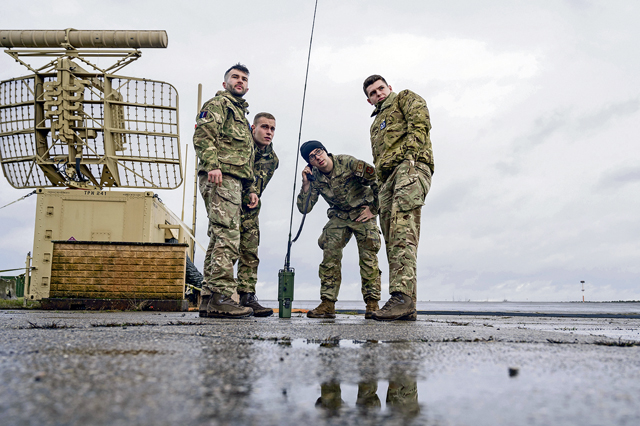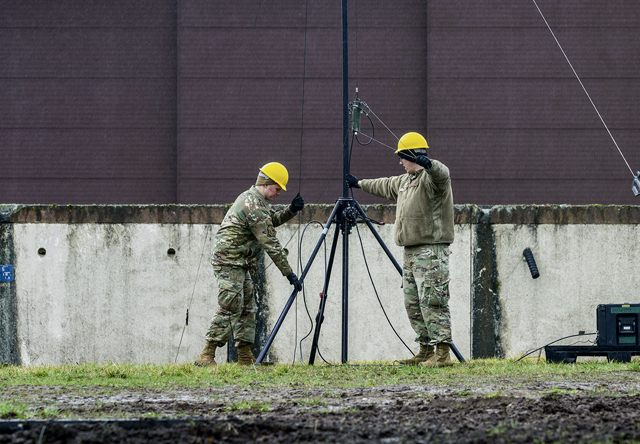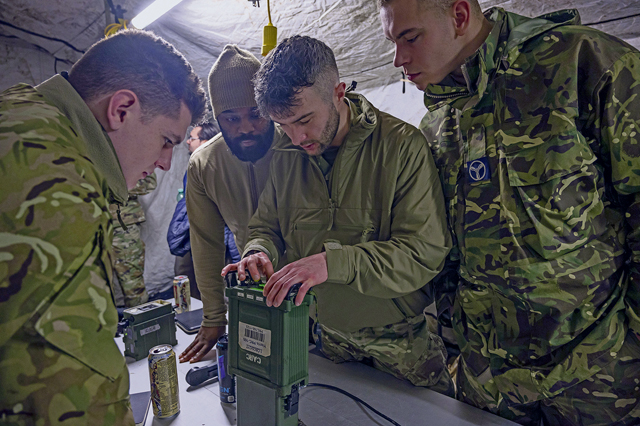
Royal Air Force Tactical Communicators have joined their U.S. Air Force counterparts in Germany to hone their skills using high frequency communications.
The training culminated with a combined U.K./U.S. team establishing a high frequency link with Guam, more than 11,500 km away in the Western Pacific.
“It is essential that we stand shoulder-to-shoulder with our allies in NATO as the alliance turns 75. This opportunity to train with our U.S. partners allows us to leverage our combined strengths, enhancing our shared tactics and strong relationships while honing technical skills in HF. This is only one small element of our work delivering on the Combined Vision Statement for Agile Combat Employment.”
Wing Commander Maisey
Officer Commanding of the RAF’s Tactical Communications Wing

High frequency communications are a key part of Agile Combat Employment or ACE — the ability to avoid or mitigate attacks from an adversary, by dispersing air assets across a variety of austere locations and continuing to operate effectively with minimal support. Although HF is not new in itself, when combined with modern technology it offers an extremely effective way to communicate globally without having to rely on satellites or data cables under the ground or sea.
“The best part about this partnership is that it is not just a ‘one-off’ training opportunity. The longstanding trust and partnership that we have with our RAF counterparts will outlive Ben Maisey and me. As we celebrate the combined accomplishments of the past and present, I am even more excited for the future.”
Lieutenant Colonel Brown

The Cyberspace Communications Specialists, currently serving on Tactical Communications Wing within 90 Signals Unit at RAF Leeming, attended the Advanced High Frequency Communications Course at Ramstein Air Base. Hosted by the USAF’s 1st Combat Communications Squadron, known as 1 CBCS, they exchanged knowledge, skills and an understanding of both units’ equipment.
In September the RAF and USAF signed a Combined Vision Statement on Agile Combat Employment to commit to a new strategic approach to the employment of aircraft and enabling functions such as communications. One of its key objectives is to replace unique systems with interoperable ones — systems that can work together and when appropriate be operated by members of either air force.
On the final day of training, led by high frequency experts from the 1 CBCS, the U.K. and U.S. signallers collaborated to establish a communications link with 644 CBCS 11500 km away in Guam. This cooperation reinforced both air forces’ capabilities to work together and operate each other’s equipment.


